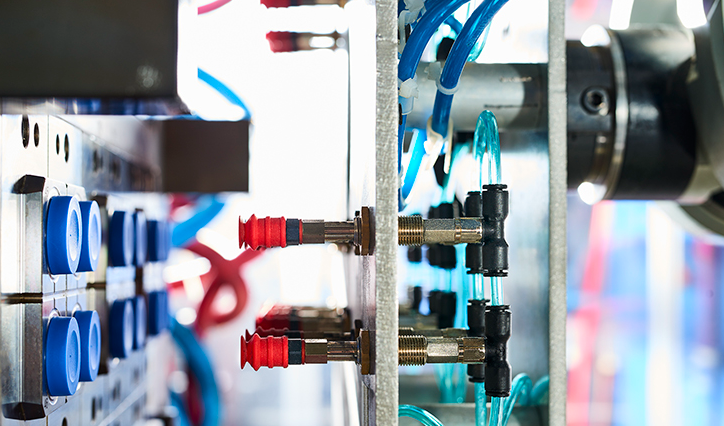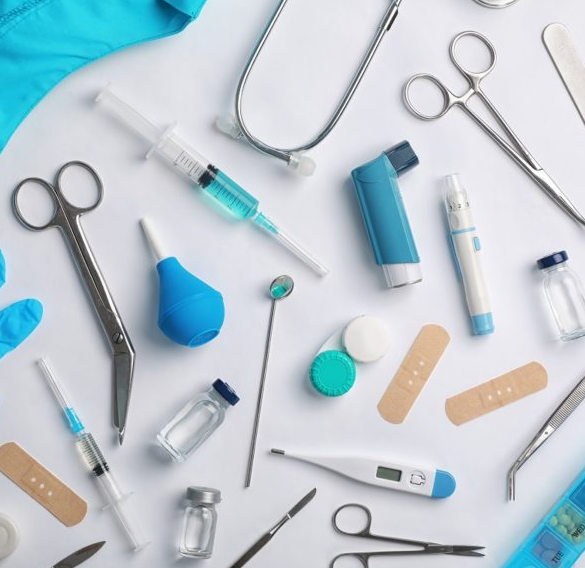Blog
We regularly update articles related to the prototyping and manufacturing industry. You’re welcome to check our previous blogs and subscribe to our newsletter.
Precision in Healthcare: The Role of Injection Molding in Medical Device Manufacturing
Injection molding, a dominant manufacturing technique, involves injecting molten materials into a mold to produce parts in large volumes. While this method has been foundational across various industries, its significance in the medical field cannot be overstated. Within healthcare, the precision, consistency, and scalability afforded by injection molding make it indispensable for producing a wide range of medical devices.

From intricate surgical instruments to complex diagnostic tools, injection molding medical devices ensures that medical professionals have reliable and standardized equipment at their disposal. As the demand for advanced medical solutions grows, so does the reliance on this manufacturing technique, highlighting its pivotal role in driving medical innovations and ensuring patient safety.
Benefits of Injection Molding in Medical Manufacturing
Precision and Consistency
Injection molding is celebrated for its unparalleled precision. In the medical realm, where even minute discrepancies can have significant implications, this accuracy is paramount. The technique allows for the production of components with intricate designs and tight tolerances, ensuring that every piece, from the first to the thousandth, meets the exact specifications. This consistency is crucial for devices like surgical instruments or diagnostic tools where standardized performance is non-negotiable.
Cost-effectiveness and Scalability
Though the initial setup for injection molding—creating molds and establishing processes—can be capital-intensive, its long-term benefits in mass production are evident. Once the mold is developed, producing large volumes becomes cost-effective. This scalability means that as demand for a medical device rises, production can be ramped up without a substantial increase in unit cost, ensuring that essential medical tools remain accessible and affordable.
Material Versatility and Biocompatibility
The medical field has stringent requirements for materials, often necessitating biocompatible, sterile, and sometimes even bioresorbable properties. Injection molding shines in this aspect due to its compatibility with a diverse range of materials. From plastics that resist bacterial growth to those that dissolve safely within the human body, injection molding can handle them all. This versatility ensures that medical devices not only perform their intended functions but also interact harmlessly with the human body.
Key Medical Devices Produced via Injection Molding
Surgical Instruments and Tools
The realm of surgery demands precision, and injection molding delivers just that. Many surgical tools, from scalpel handles to forceps, are produced using this method. The technique ensures that these instruments are of consistent quality, ergonomically designed, and can be easily sterilized, making them both effective and safe for surgical procedures.
Implantable Devices
Implants, whether they’re orthopedic devices, cardiac pacemakers, or cochlear implants, require utmost accuracy and biocompatibility. Injection molding, compatible with a plethora of medical-grade materials, facilitates the creation of these devices. Additionally, it can produce bioresorbable implants, which dissolve safely within the body over time, eliminating the need for subsequent removal surgeries.
Diagnostic Equipment and Components
The diagnostics field relies heavily on equipment that can deliver accurate and consistent results. Components of devices like blood glucose meters, MRI machines, and even simple test kits often come from injection molding processes. This ensures that the equipment is reliable, durable, and can meet the rigorous demands of medical diagnostics.
Drug Delivery Systems
Modern medicine often employs sophisticated drug delivery mechanisms, from simple syringe barrels to complex insulin pumps and inhalers. Injection molding crafts many of these systems, ensuring precise dosages, user-friendly designs, and dependable performance. The ability to mold with materials that are both durable and safe for medical use ensures these devices can reliably administer medications.
Challenges and Considerations in Medical Injection Molding
Ensuring Sterility and Material Safety
Injection molding medical devices often interact directly with the human body, making sterility and material safety paramount. Ensuring that injection-molded products are free from contaminants and made of biocompatible materials poses a challenge. Furthermore, post-molding sterilization processes must be adapted to each material type without compromising device integrity.
Medical devices are subject to stringent regulations that vary across regions. Manufacturers must keep abreast of evolving standards and ensure compliance, which can be intricate given the global nature of the medical industry. These regulations also dictate rigorous testing and validation processes, adding layers of complexity.

Addressing Design and Molding Challenges Specific to Medical Applications
Medical devices often have unique design requirements, necessitating customized molds and specialized molding processes. Factors such as wall thickness, gate placements, and mold cooling rates can impact the final product’s functionality and safety. Achieving the perfect balance between design intent and manufacturability demands expertise and often iterative development.
While injection molding offers numerous advantages in medical manufacturing, these challenges underscore the need for meticulous planning, deep expertise, and a commitment to excellence at every stage of the production process.
Innovations and the Future of Injection Molding in Healthcare
The horizon of medical injection molding is rich with innovation. Advancements in materials, notably bioresorbable polymers, promise implants that safely dissolve in the body, reducing the need for follow-up surgeries. Concurrently, the integration of smart technology and electronics within molded devices is paving the way for real-time health monitoring and personalized patient care.
Furthermore, as the healthcare sector gravitates towards at-home care and wearable tech, trends in miniaturization and portability are taking center stage. Injection molding, with its precision and versatility, is poised to play a pivotal role in realizing these advancements, further embedding its significance in the future of healthcare.
Concluding Insights
Injection molding medical devices, with their unmatched precision and versatility, has firmly established itself as a cornerstone of medical device manufacturing. As we navigate the intricate pathways of modern healthcare, the fusion of this technique with emerging materials, smart technologies, and design innovations holds immense promise. The challenges it faces are real, but they also represent opportunities for further refinement and innovation.
As healthcare evolves towards personalized treatments, home-based care, and global accessibility, the role of injection molding becomes even more pivotal. Its adaptability ensures that as our medical aspirations grow, the tools and devices we rely on will continue to be cutting-edge, reliable, and tailored to the ever-evolving needs of patients and medical professionals alike.





